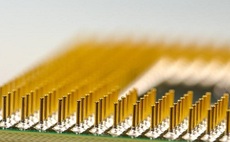V3 terrifies itself helping Cambridge University identify threats to our future
The fear that technology could cause humanity's downfall has long been the staple of science fiction and horror writers, with everything from robotic uprisings to environmental catastrophes caused by our meddling appearing in print and on the screen.
Normally such stories are just that, fun diversions from the benefits that technology has given us, whether that's the internet, space exploration or automated machines. However, such is the speed of our developments some people are worried, very worried.
The opening of the Centre for the Study of Existential Risk (CSER) at Cambridge University shows that top academics believe there's a real risk to our future and that a closer study of potential risks is required.
As such, the V3 team together to dream up some terrifying scenarios that could befall our species, with the aim of offering some guidance to those working deep underground in the lead-lined, zombie-proofed seats of learning in Cambridge.
10. Nuclear systems infiltrated
 The threat of nuclear Armageddon has receded in the years since the Cold War ended but that doesn't mean the dangers of nuclear bombs have gone for ever.
The threat of nuclear Armageddon has receded in the years since the Cold War ended but that doesn't mean the dangers of nuclear bombs have gone for ever.
With nations like the US storing such weapons under lock and key and guarded by complex security codes everything should be safe, but it only takes one person to break into a system and all hell could be let loose.
Reports even surfaced earlier this year that Chinese hackers had done just that, although the US dismissed this claim.
Still, it's a worrying thought and one that makes us hope those developing the security for their nuclear arsenals go beyond the use of the word password for their security.




















